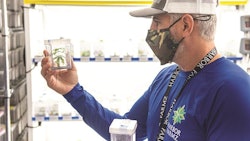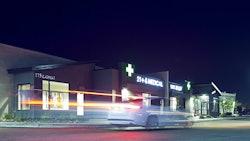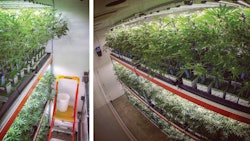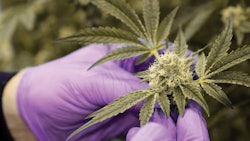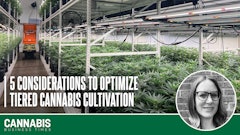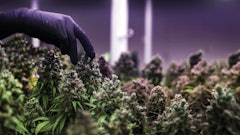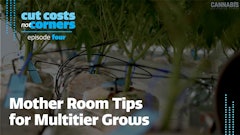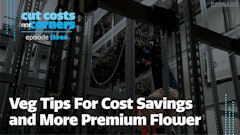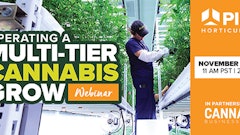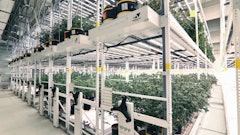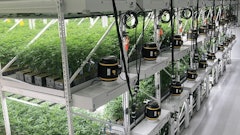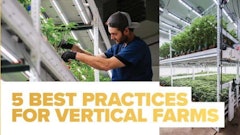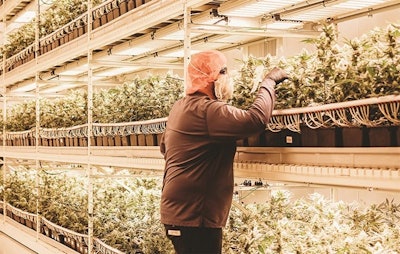
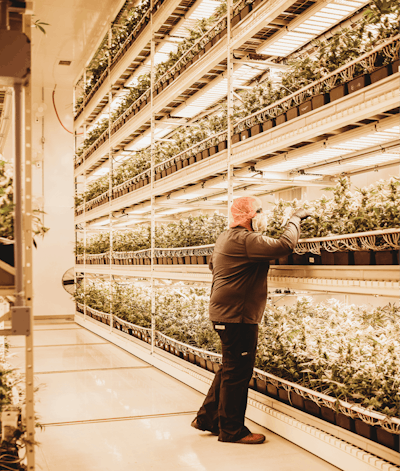
Lighting is one of the most critical components of any successful grower’s system. At GreenSeal Cannabis Co., we run one of the cannabis industry’s leading vertical cultivation systems, which today stands six levels high in flower and has led to yields averaging 1.87 kg per square foot of flower room space per year. Our stacked environment has forced us to research lighting in depth, including factors like spectrum, intensity, cooling, infrastructure, electrical distribution, and more.
Here are a few tips related to lighting that we’ve found can help growers maximize their yields, improve their THC and terpene results, and decrease their cost per gram:
1. Develop and follow a formula.
Most growers have formulas for nutrients and irrigation; however, far fewer have a lighting formula. Light is the plant’s primary energy source, so it’s important that growers devote more research and development to determine optimal lighting conditions throughout the grow cycle.
Take the time to figure out what your specific cultivars need within your specific growing environment to perform their best, beginning with a base level of lighting. Observations can be tracked in Excel manually or using other software. It is critical to capture as much data as possible, which could involve week-over-week changes in light intensity, spectrum, and other key variables, and observing the resulting metrics such as yield, terpenes and potency.
2. Experiment with R&D plants only to avoid unintended consequences.
Cannabis cultivation is a multi-variable equation; you cannot simply change X and expect Y without impacting Z (or A, B and C, for that matter). Very few agricultural products are as picky or delicate when it comes to optimal growing conditions for the highest quality product. While lighting is a massively important variable, it is far from the only one.
If you are considering lighting changes, especially in your prime cultivation space where product is destined for sale, it is best to make slow, incremental changes with R&D-dedicated plants and closely observe the results. In GreenSeal’s lighting research trials, we’ve seen small changes in lighting variables lead to some pretty dramatic changes—both positive and negative—in yield, cannabinoid and terpene content, nutrient deficiencies, humidity and more. While some results become apparent overnight, others take a full harvest cycle or multiple cycles to confirm. As frustrating as it may be to wait to observe results, it is far better than growing a batch of unsellable flower.
3. Analyze spectrum vs. intensity.
GreenSeal participated in a yearlong light intensity study that included eight to 12 light fixtures with varying spectrums in over 500 sq. ft. of canopy space. (Read the full paper in Agronomy Journal at bit.ly/GreenSeal-agronomy-journal). Our findings were surprising: light spectrum had very little, if any, impact on flower yields and terpene content after accounting for light intensity. It may be worthwhile to conduct R&D to determine whether light spectrum is truly delivering the downstream results that growers are looking for.
4. Lower wattage may be costing, not saving, you money.
One of the benefits of switching to LED fixtures are cost savings; replacing a 1,000-watt fixture with a 300-watt LED sounds like a no-brainer, as lower power consumption means lower electricity bills, saving the grower money.
What we discovered is that a 300-watt LED is not necessarily going to produce as much light intensity as what the plant can tolerate throughout its grow cycle to maximize yields. Instead of trying to simply replicate the 1,000-watt HPS fixture with an LED, growers can consider increasing their wattage under LEDs to increase their light intensity, as the extra power consumption costs are more than outweighed by the extra dried flower yields, and ultimately, revenue.









